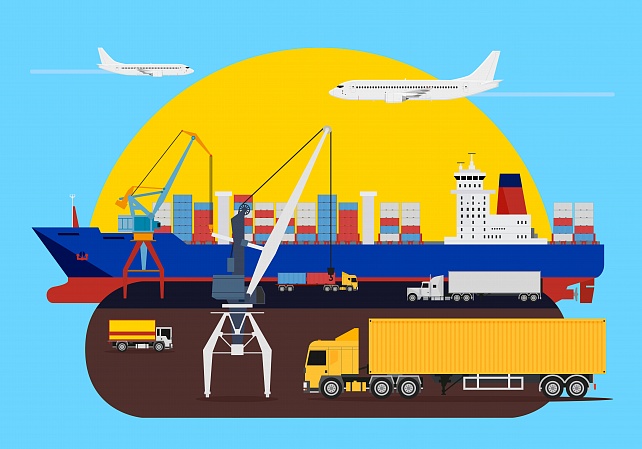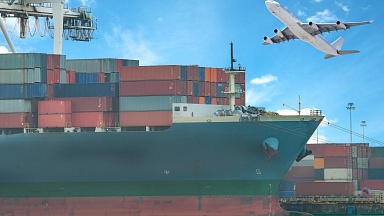Global airlines managed the traditional ‘summer slack season’ for air cargo space in July by «constantly tweaking capacity levels to address flat demand during the month», according to new analysis from CLIVE Data Services and TAC Index.
But this year’s summer ‘slack season’ is expected to be short-lived, and airlines’ efforts to trim capacity in response to a slight softening in demand brought average spot rates back up above their levels in June. And prices that continue to be strong versus last year and pre-pandemic levels are expected to remain so for the foreseeable future as demand continues to outstrip supply, rates specialist TAC Index believes.
New industry volume, load factor, and rates data from analysts CLIVE Data Services and TAC Index also highlight air freight rates lagging two weeks behind changes in the demand-supply ratio. As in previous months of 2021, to provide meaningful analyses of the current state of the global air cargo market, CLIVE continues to measure performance to pre-Covid 2019 levels as well as providing 2020 year-over-year comparisons. This shows chargeable weight was flat in July versus 2019 and +23% over 2020.
Capacity remains tightly constrained
Capacity, however, remains tightly constrained. Available capacity, while +29% compared to 2020, is still 18% below the level seen in 2019 before the pandemic took hold.
Consequently, CLIVE saw «a fluctuating ‘dynamic load factor’ in July». Reduced capacity contributed to the 5% pts rise in dynamic load factor versus 2019 — measured against both the volume and weight perspectives of cargo flown and capacity available — but a 3% pts drop over the same month in 2020, CLIVE reported.
«The dynamic load factor for July of 66% is the lowest we have seen since the start of the COVID crisis,» said Niall van de Wouw, CLIVE’s Managing Director. "The difference compared to 2019 is also 2-4% pts lower than in recent months.
«The start of the holiday season and its traditional impact on air cargo volumes is obviously a factor, but it’s also clear that airlines are constantly tweaking capacity. Demand has not picked up yet, so they are tightly managing supply.
«Compared to where the market was a year ago, performance on a par with July 2019 is certainly not bad news, but the demand vs. supply ratio is going to remain tight, especially with no signals that the inter-continental passenger market is going to recover anytime soon.»
He added: «When we look deeper into the data, we see that this figure of 66% was mainly caused by low load factors at the start of the month, while, in the last week of July, it rose to 68% and this continued in the first week of August. So, if those early weeks were the ‘slack season,’ the load factor was still at a relatively high level and any summer slump was short-lived — but this has to be seen against the backdrop of current capacity trends in the market.
«The rise in load factor during the last two weeks of July was mainly caused by capacity being taken out of the market based on less strong airfreight demand, as we have reported previously.»
Rates recover above June levels
CLIVE’s dynamic load factor data and the latest air freight rates analyses from TAC Index indicates a 1 to 2 week delay in rates being adjusted to industry load factors.
The BAI (Baltic Air Freight Indices) monthly average increased by 2% in July over June but was 6% below the year-to-date high seen in May. TAC Index saw week-on-week reductions in the final two weeks of July, which followed the drop in load factor at the start of the month. It reports 13 of its 17 trade lane indexes saw an increase over June 2021.
The overall index was positive versus July last year at +38% and versus 2019 by 98%, reflecting both demand and constraints in capacity.
The China and Hong Kong markets saw an improvement in July over June, 2% and 5% respectively, after large declines in June, TAC highlighted, noting that «all the trade lanes from these markets were positive over June. The European market also improved versus June, with average rates up 2% ex Heathrow and Frankfurt for July, for example, although the growth versus 2019 differed significantly, with Frankfurt +62% and Heathrow up a staggering 202%.»
Gareth Sinclair of TAC Index commented: «Demand continues to be strong in the air freight industry versus 2020 as economies recover, eCommerce continues to thrive, and the sea freight industry continues to suffer from capacity and operational challenges.
«In summary, air freight market prices were up in July but did not recover back to the highs seen in May. Prices continue to be strong versus last year and pre-pandemic levels and this is expected to be the case for the foreseeable future as demand continues to outstrip supply.»




